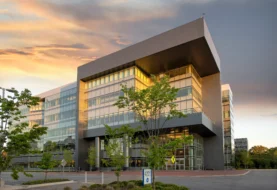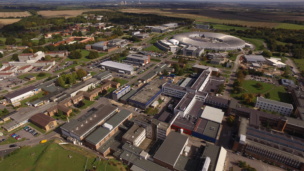From finding exoplanets to drafting contracts, AI can help at every corner of NASA, the space agency’s AI chief told Payload.
“Everyone will, in some way, have their workday augmented using some type of an AI technology,” said David Salvagnini, who became NASA’s chief artificial intelligence officer last month in addition to serving as chief data officer.
Salvagnini’s new role is part of a broader White House mandate for all federal agencies to appoint chief artificial intelligence officers issued late last year. But the space agency is a step ahead of the rest—it already boasts the most AI use cases of any federal agency.
Payload caught up with Salvagnini, a veteran government IT executive who joined NASA a year ago, to learn how he’s taking on the new mandate, how he’s thinking about security, and the workforce’s reaction to AI.
This interview has been edited and condensed.
What’s your focus as the new CAIO?
For NASA, this is largely about sort of learning and scaling as need arises. In fact, there is a large community of practitioners across NASA that collaborate regularly on the use of AI and [machine learning]….When NASA reported its use case inventory for the last couple years, we had the largest volume of use cases reported of any other federal agency.
Have you been playing with the latest generative AI tools being released?
Oh, absolutely. So I’ve not only messed around with the LLMs, ChatGPT 3.5, 4.0, but I’ve also messed with some pilot activities offered by Google, Bard, for example, and Azure OpenAI. We have some activities underway within NASA where we’re able to do native language querying of corpuses of data within the organization, and [we’re] excited by the outcomes.
Do you think that major AI companies are training on NASA data?
I’m certain they are. Although I can’t say that I am personally aware of a particular company that might be doing that, our data is a rich treasure trove of insight on so many topic areas, and as such, I can imagine any number of different companies who would want to leverage that data as they think about how they enter into this sort of market space.
As AI becomes more prevalent, do you worry about the security implications?
As far as the traditional use of AI here at NASA—you know, autonomous systems, climate modeling, exploration of objects in space—that is all very heavily peer-reviewed and/or rigorously tested and evaluated as part of our systems engineering process. I have less concern about those use cases, just because of the amount of review and scrutiny and rigor that goes into evaluating them before they are operationalized.
There’s more concern and more unknown now as we think about…the introduction of more AI capabilities and some of the commercially procured products that we will likely be inserting into our network environment here. So yes, we have some learning to do as it relates to, how do we assess these tools?
What are some of your concerns about the newer AI Models?
In some cases, there can be errors of omission, so we have to be careful about the completeness of some of the responses we get from some of these tools…You can have an amazingly capable, large language model-enabled application; that said, understanding how to prompt that capability to get the accurate answers that you hope to gain is very, very important. So when we think about using these tools, we have to think about equipping the workforce with an understanding of how to prompt them for maximum effect and how to eliminate some of the potential for error that can come from asking questions that just are not well formed.
I’m excited about some of the graphical tools, like DALL-E, for example, and have played with that. But again, this is another case where you can see errors introduced into imagery that’s produced by GenAI capabilities. For example, maybe an astronaut’s uniform, where a US flag is inaccurate—doesn’t have enough stripes, doesn’t have enough stars…[If] we’re gonna stamp a NASA brand on an image and say, this is something that NASA stands behind, the quality standard for us to do that is high, so we want to make sure things are correct.
How excited are NASA employees for AI?
Our identity as an agency [means] the workforce is incredibly curious about the world around them and the opportunities to leverage technologies and better do what we do. There is an enormous appetite for the potential of AI…Now the demand signal is, you know, I have a financial officer who wants to use generative AI to help produce a performance report, a contracting officer who wants to use generative AI as part of procurement activities and crafting of contract requirements…in other words, everyone will in some way, have their workday augmented using some type of an AI technology.




